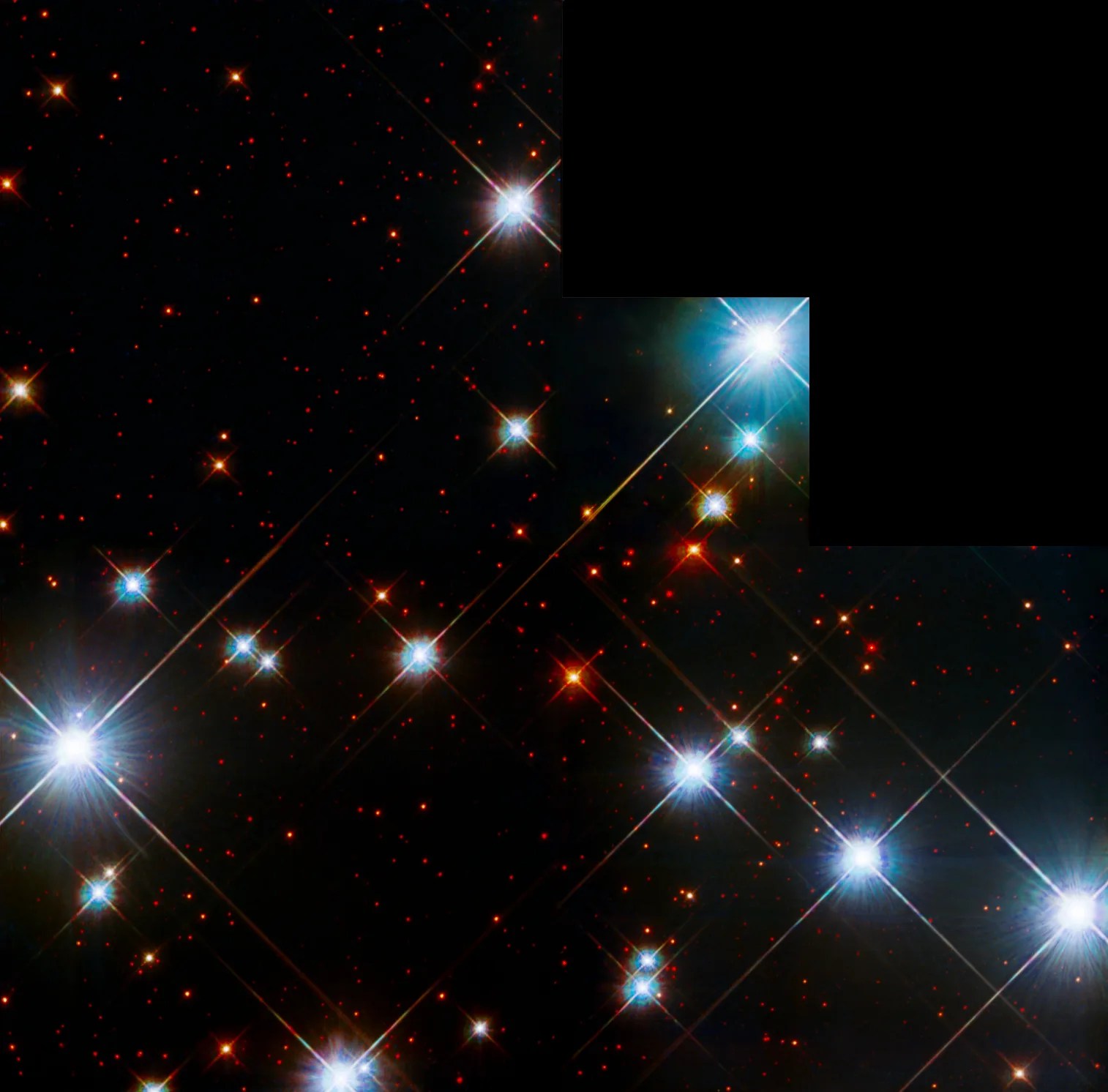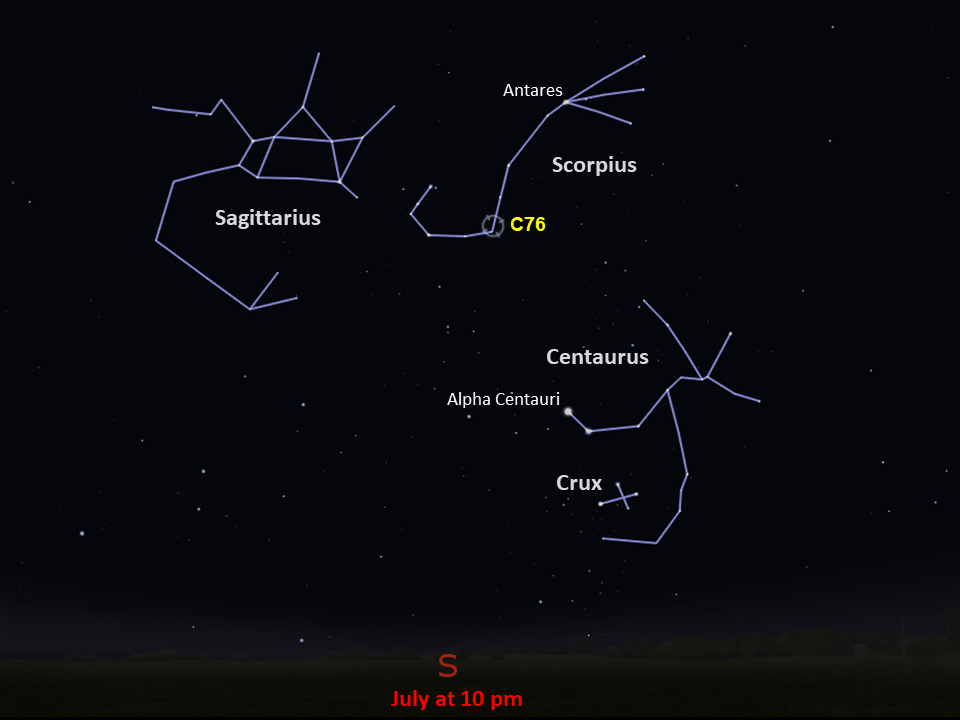Caldwell 76
This bright star cluster was first cataloged by the Italian astronomer Giovanni Battista Hodierna.
Distance
5,600 light-years
Apparent Magnitude
2.6
constellation
Scorpius
object type
Open Cluster
This image captures the shining stars in a portion of the open cluster Caldwell 76, also known as NGC 6231. It combines observations taken at ultraviolet, visible, and infrared wavelengths by Hubble’s Wide Field and Planetary Camera 2. This camera, before it was retired in 2009, was the highest resolution camera on any spacecraft capable of making observations in the far-ultraviolet range of the electromagnetic spectrum. Astronomers used the unique capabilities of the camera to survey Caldwell 76 and five other open clusters in the Milky Way with unprecedented clarity. By probing open clusters in the far-ultraviolet, astronomers were able to more efficiently find white dwarfs (the cores of stars that have shed their gaseous shell) that would be difficult to detect in the cluster using other methods. This was the first far-ultraviolet survey of open clusters in the Milky Way performed at such high resolution.
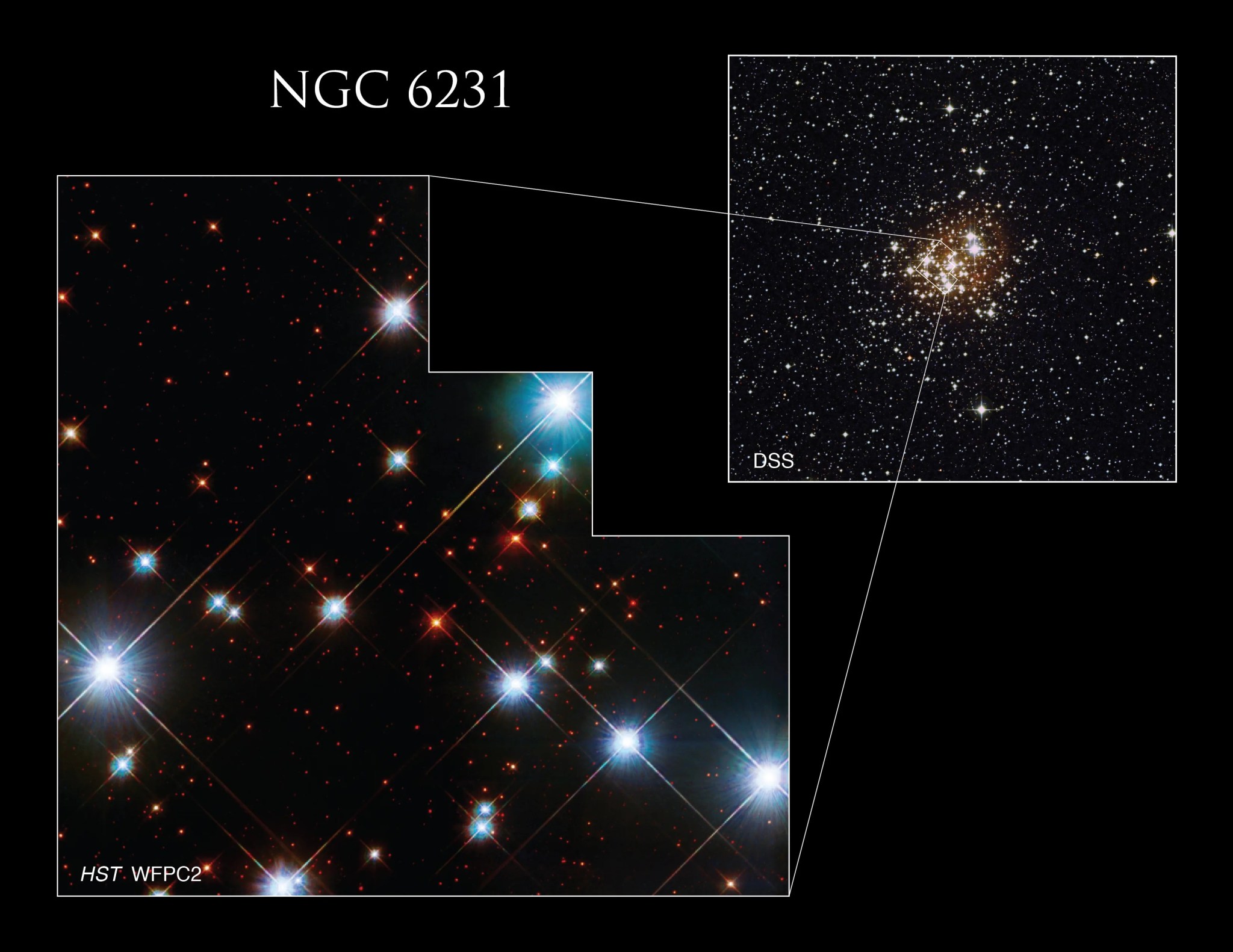
Caldwell 76 is located in the constellation Scorpius, roughly 5,600 light-years from Earth. First discovered by the Italian astronomer Giovanni Battista Hodierna, it has an apparent magnitude of 2.6 and can be spotted with the naked eye when the skies are dark and clear. The cluster appears as a fuzzy patch of light to the unaided eye, but its individual stars can be resolved using a pair of binoculars. Caldwell 76 is easiest to observe during the winter in the Southern Hemisphere. It can be viewed from low latitudes of the Northern Hemisphere in the summer.
The cluster is a popular target for southern observers because it is a part of the “False Comet” — a group of celestial objects that resembles a comet streaking across Scorpius. Caldwell 76 forms the head of the “comet,” while two other clusters and a cloud of gas and dust, called an emission nebula, form the tail.
Glossary
Apparent Magnitude - The brightness of an astronomical object as seen from Earth, influenced by the object's distance from Earth, its absolute magnitude, and even gas and dust that lie between the object and Earth.
Emission Nebula - A cloud of ionized gas that emits energy at wavelengths across the electromagnetic spectrum, causing it to glow with vibrant colors.
Open Cluster - A group of stars loosely bound by gravity, destined to be short lived because the gravitational interactions between members are weak enough that stars can be drawn away from the cluster by stronger gravitational forces.
White Dwarf - The core of a dead Sun-like star whose outer layers have been expelled into space.
Explore Hubble's Caldwell Catalog
The following pages contain some of Hubble’s best images of Caldwell objects.
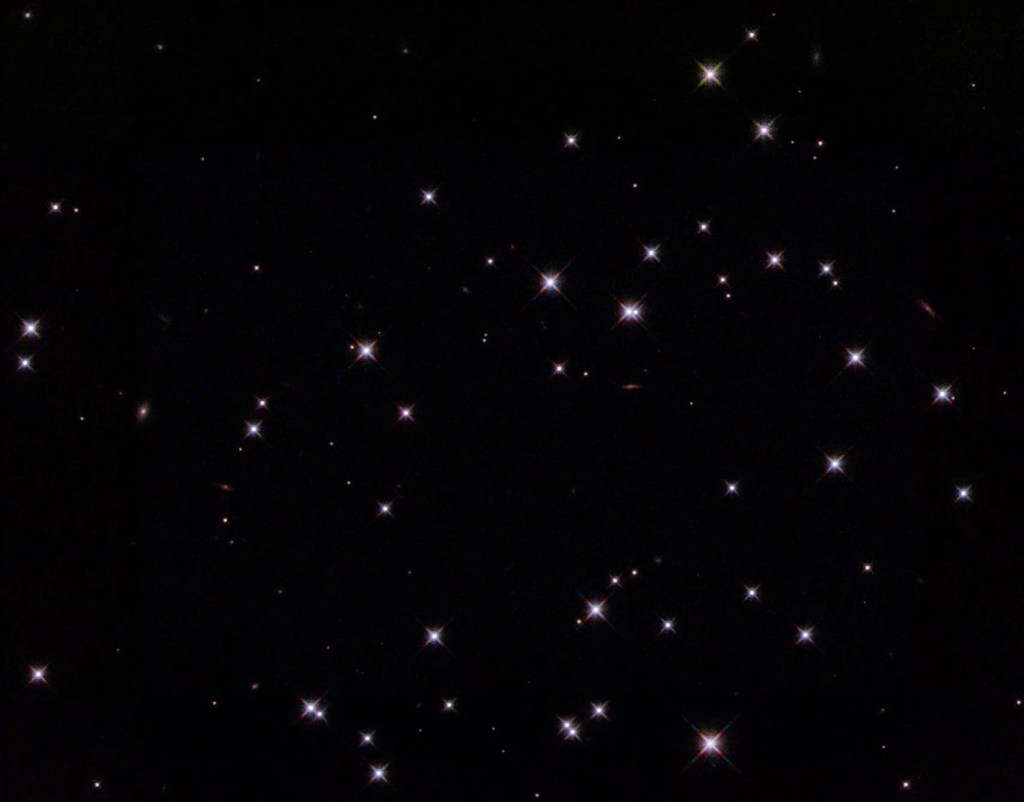
Also known as NGC 188, this group of stars formed from a large cloud of gas making the stars roughly…
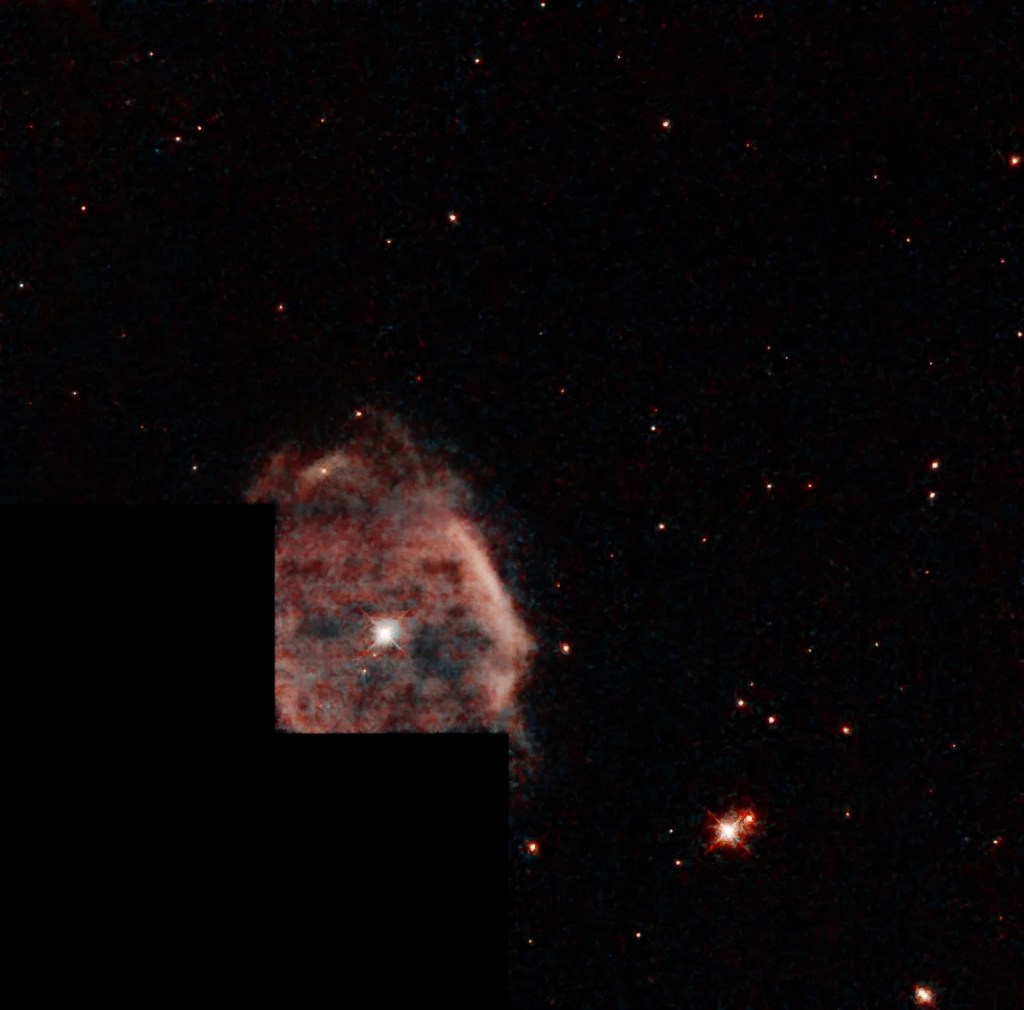
This shell of gas is expanding outward, away from the dying star within.
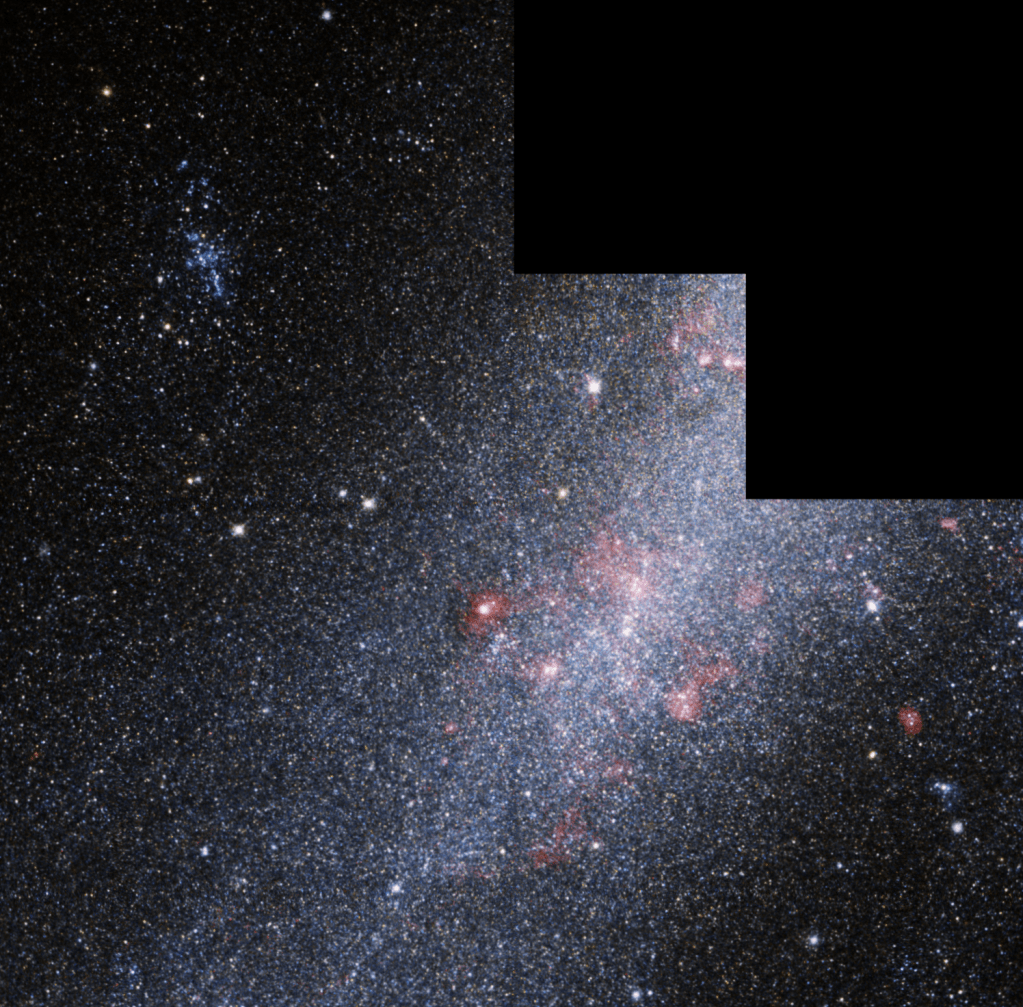
This barred spiral galaxy was first spotted by British astronomer William Herschel in April 1793 in the constellation Draco.
































